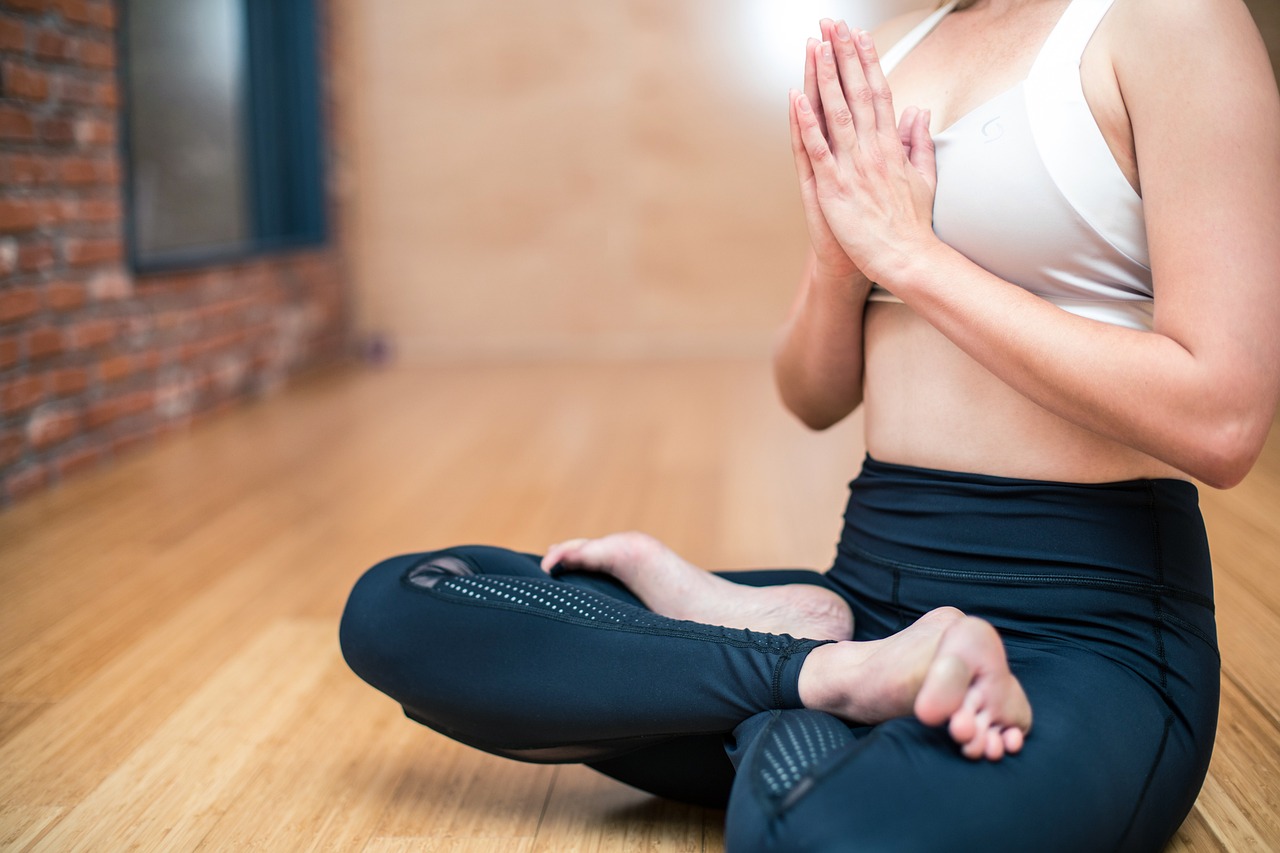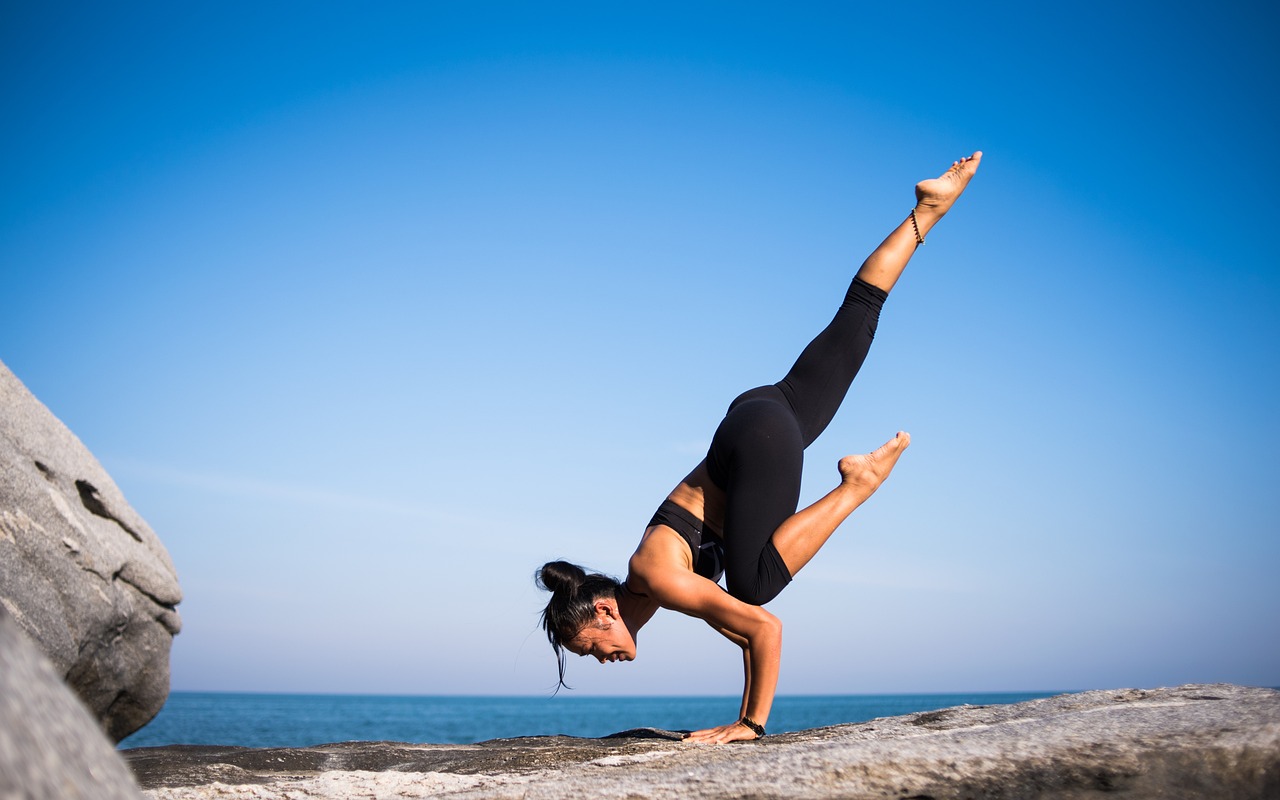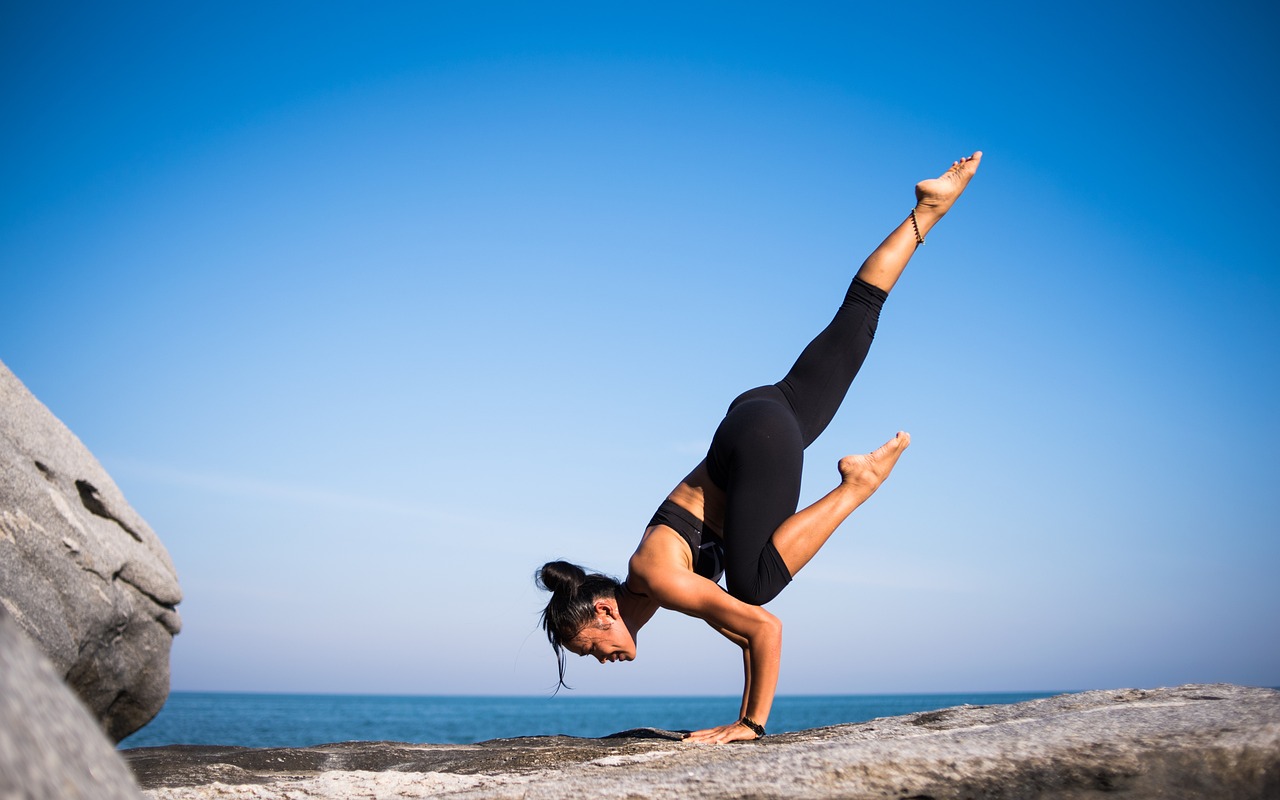Living with multiple sclerosis can present numerous challenges, both physical and emotional. However, one promising avenue for managing the symptoms and enhancing overall well-being is the practice of yoga. In this article, we will explore the transformative power of yoga for individuals with multiple sclerosis, and how this ancient practice can nurture the body, promoting inner peace and holistic wellness. By delving into the profound impact of yoga on the mind, body, and soul, we hope to illustrate the potential benefits that it can offer to those living with this complex neurological condition. So, let us embark on this journey of discovering how yoga can empower and support individuals with multiple sclerosis.

Understanding Multiple Sclerosis
What is Multiple Sclerosis?
Multiple Sclerosis (MS) is a chronic autoimmune disease that affects the central nervous system. It occurs when the immune system mistakenly attacks the protective covering of nerve fibers, called the myelin, causing communication problems between the brain, spinal cord, and the rest of the body. Patients with MS may experience a wide range of symptoms, which can vary in severity and duration.
Symptoms of Multiple Sclerosis
The symptoms of MS can manifest differently in each individual, making it a challenging disease to diagnose and manage. Common symptoms include fatigue, numbness or tingling in the limbs, muscle weakness, coordination and balance problems, difficulty walking, and cognitive issues. Some individuals may also experience bladder and bowel problems, pain, depression, and anxiety. It is essential to recognize these symptoms and seek medical advice for proper diagnosis and treatment.
Causes of Multiple Sclerosis
The exact cause of MS is still unknown, but researchers believe that a combination of genetic and environmental factors may play a role. Certain genes linked to the immune system’s function are associated with a higher risk of developing MS. Additionally, factors such as viral infections, low levels of vitamin D, smoking, and certain autoimmune diseases may contribute to the development of MS. However, more research is needed to fully understand the complex causes of this disease.
Benefits of Yoga for Multiple Sclerosis
Yoga has gained recognition as a complementary therapy for managing multiple sclerosis. Incorporating yoga into a daily routine offers numerous benefits that can enhance well-being, both physically and mentally.
Improved Flexibility and Range of Motion
Yoga is known for its gentle, stretching movements that promote flexibility and joint mobility. The practice of yoga poses, or asanas, can help individuals with MS improve their overall flexibility and range of motion, making everyday tasks and movements easier and more comfortable. By regularly practicing yoga, individuals can work towards maintaining or increasing their range of motion, enhancing their quality of life.
Enhanced Balance and Stability
Balance and stability are often compromised in individuals with MS, leading to increased risk of falls and injuries. Yoga incorporates various poses that focus on improving balance and stability by targeting core strength and body awareness. By practicing yoga, individuals can develop greater stability, which can greatly impact their ability to perform daily activities with confidence and reduce the risk of accidents.
Reduced Fatigue and Improved Energy Levels
Fatigue is one of the most common symptoms experienced by individuals with MS, often leading to a decrease in overall energy levels and quality of life. Yoga offers effective strategies to manage fatigue and boost energy levels. Yoga practices such as deep breathing exercises, gentle movements, and relaxation techniques can help individuals with MS combat fatigue by promoting relaxation, reducing stress, and improving overall vitality.

Yoga Poses for Multiple Sclerosis Management
Yoga poses can be adapted to meet the specific needs and limitations of individuals with multiple sclerosis. Here are three poses that are particularly beneficial for MS management:
Seated Mountain Pose
Seated Mountain Pose is a seated variation of the classic Mountain Pose. Start by sitting comfortably in a chair with your feet flat on the floor. Align your spine, lengthen through the crown of your head, and place your hands on your thighs. Take a few deep breaths, focusing on grounding yourself and finding a sense of stability. This pose helps to improve posture, increase body awareness, and strengthen the core muscles.
Cat-Cow Pose
Cat-Cow Pose is a gentle and rhythmic movement that helps to release tension and increase flexibility in the spine. Begin on your hands and knees, with your wrists under your shoulders and your knees under your hips. As you inhale, arch your back and lift your chest, allowing your belly to drop towards the floor. As you exhale, round your spine, tucking your tailbone and drawing your chin towards your chest. Repeat this movement, syncing your breath with the movement, to gently warm up and mobilize your spine.
Child’s Pose
Child’s Pose is a relaxing and restorative pose that helps to relieve tension in the back, shoulders, and neck. Start by kneeling on the floor with your big toes touching and your knees hip-width apart. Slowly lower your hips towards your heels and extend your arms forward, resting your forehead on the mat. Take deep breaths, allowing your body to relax and release tension. This pose promotes relaxation, reduces stress, and encourages a sense of surrender and letting go.
Breathing Exercises for Multiple Sclerosis Management
Practicing specific breathing exercises can greatly benefit individuals with multiple sclerosis by improving respiratory function, reducing stress, and promoting a sense of calmness. Here are two breathing exercises that are particularly helpful for MS management:
Diaphragmatic Breathing
Diaphragmatic breathing, also known as belly breathing, involves consciously engaging the diaphragm while breathing. To practice this technique, sit or lie down in a comfortable position. Place one hand on your chest and the other hand on your abdomen. As you inhale deeply through your nose, focus on expanding your abdomen, allowing your belly to rise. Exhale slowly, feeling your belly fall back towards your spine. This type of breathing helps to promote relaxation, reduce anxiety, and increase oxygen flow to the body and brain.
Alternate Nostril Breathing
Alternate Nostril Breathing is a simple yet powerful breathing technique that helps to balance the energy in the body and calm the mind. Start by sitting in a comfortable position, with your spine straight and your eyes closed. Place your right thumb over your right nostril and your ring finger or pinky finger over your left nostril. Close your right nostril with your thumb and inhale deeply through your left nostril. Then, close your left nostril with your ring finger or pinky finger and exhale through your right nostril. Continue this pattern of inhaling and exhaling through alternate nostrils for a few minutes, focusing on deep, slow breaths. This technique helps to reduce stress, improve focus, and balance the nervous system.

Mindfulness and Meditation for Multiple Sclerosis
Mindfulness and meditation practices have been shown to have significant benefits for individuals with multiple sclerosis, helping to reduce stress, improve mental clarity, and cultivate a sense of inner peace. Here are some mindfulness and meditation techniques that can be beneficial for MS management:
Benefits of Mindfulness and Meditation
Practicing mindfulness and meditation can have a positive impact on individuals with multiple sclerosis, both physically and mentally. These practices promote stress reduction, improve focus and concentration, reduce anxiety and depression, and enhance overall well-being. By incorporating mindfulness and meditation into their daily routine, individuals with MS can develop coping strategies to manage the challenges of their condition and cultivate a positive mindset.
Body Scan Meditation
Body scan meditation is a mindful practice that involves systematically scanning the body and bringing attention and awareness to each body part. Start by lying down in a comfortable position, with your arms by your side and your eyes closed. Begin by focusing on your breath, allowing yourself to relax and let go of any tension. Then, slowly bring your attention to each part of your body, starting from your toes and moving up through your legs, torso, arms, neck, and head. As you bring awareness to each body part, observe any sensations or areas of tension, and consciously release any physical or mental tension you may be holding. This practice promotes relaxation, body awareness, and a deeper connection with oneself.
Loving-Kindness Meditation
Loving-Kindness Meditation, also known as Metta Meditation, involves cultivating feelings of love, compassion, and kindness towards oneself and others. Find a comfortable seated position, close your eyes, and take a few deep breaths. Start by directing loving-kindness towards yourself, silently repeating phrases such as “May I be happy, may I be healthy, may I live with ease.” Then, extend these wishes to someone you love, a neutral person, and even someone with whom you have difficulty. Visualize sending love and compassion to all beings, without exception. This practice helps to cultivate a positive mindset, foster empathy and compassion, and enhance overall emotional well-being.
Incorporating Yoga into Daily Routine
Incorporating yoga into a daily routine can be a valuable addition to the management of multiple sclerosis. Here are some tips for integrating yoga into daily life:
Setting Realistic Goals
When starting a yoga practice, it is important to set realistic goals and start slowly. Recognize your current abilities, limitations, and energy levels, and tailor your practice accordingly. As you become more comfortable and build strength and flexibility, you can gradually increase the intensity and duration of your practice.
Adapting Poses for Individual Needs
Everyone’s body is unique, and individuals with MS may have specific challenges and limitations. It is important to listen to your body and modify poses as needed. Work with a qualified yoga instructor who can guide you and provide adaptations or variations that suit your individual needs and abilities.
Using Props for Support
Yoga props, such as blocks, straps, and bolsters, can be incredibly helpful in supporting individuals with MS during their practice. Props can provide stability, balance, and assistance in achieving correct alignment. They can also help in gradually working towards challenging poses and deepening the stretch without risking injury.
Finding a Qualified Yoga Instructor
Finding a qualified yoga instructor who is experienced in working with individuals with multiple sclerosis is crucial for a safe and effective practice. Here are some tips for finding a suitable yoga instructor:
Researching Credentials and Experience
When searching for a yoga instructor, it is important to research their credentials, experience, and training. Look for instructors who have specific certifications or additional training in working with individuals with MS. This ensures that they have a good understanding of the condition and can provide appropriate modifications and guidance.
Seeking Recommendations
Ask for recommendations from healthcare professionals, support groups, or other individuals with MS who have had positive experiences with yoga instructors. Personal recommendations can provide valuable insights and help you find an instructor who is well-suited to your needs.
Checking for Specialization in Multiple Sclerosis
Some yoga instructors may specialize in working with individuals with specific health conditions, including multiple sclerosis. Look for instructors who have experience in adapting yoga practices for individuals with MS and who are knowledgeable about the condition’s challenges and considerations.
Precautions and Safety Guidelines
When practicing yoga, it is important to prioritize safety and listen to your body. Here are some precautions and safety guidelines to keep in mind:
Consulting with Healthcare Professionals
Before starting any new exercise program, including yoga, it is important to consult with your healthcare professionals, such as your neurologist or physical therapist. They can provide guidance and ensure that yoga is a safe and suitable addition to your MS management plan.
Listening to Your Body’s Limits
Yoga is a practice of self-awareness and self-compassion. Listen to your body and pay attention to any signs of discomfort or strain. Honor your body’s limits and modify or skip poses that feel too challenging or uncomfortable. It is better to practice within your comfort zone and gradually progress at your own pace.
Avoiding Overexertion
Overexertion can exacerbate symptoms and lead to fatigue or injury. Pace yourself during your yoga practice and take breaks as needed. Be mindful of your energy levels and rest when necessary. Remember that yoga is not a competition, and it is important to respect your body’s limits and practice with compassion.
Building a Supportive Yoga Community
Embarking on a yoga journey for MS management can be even more rewarding when done in a supportive community. Here are some ways to build a supportive yoga community:
Joining MS-Specific Yoga Classes
Look for yoga classes or studios that offer specialized classes for individuals with multiple sclerosis. These classes are tailored to the needs and abilities of individuals with MS, providing a supportive environment with instructors who understand the condition and can offer guidance and modifications.
Connecting with Online MS Communities
Take advantage of online communities and support groups specifically for individuals with multiple sclerosis. Connect with others who are also incorporating yoga into their MS management plan. Share experiences, ask for advice, and offer support to build a network of like-minded individuals who can provide encouragement and understanding.
Participating in Yoga Retreats
Consider attending yoga retreats or workshops that focus on MS management. These retreats provide an immersive experience where individuals with MS can learn and practice yoga in a supportive and nurturing environment. Surrounding yourself with fellow participants and experienced instructors can create a sense of camaraderie and empowerment.
Combining Yoga with Other MS Management Techniques
Yoga is just one piece of the puzzle when it comes to managing multiple sclerosis effectively. Integrating yoga with other MS management techniques can offer a holistic approach to overall well-being. Here are some areas to consider:
Balanced Diet and Nutrition
Eating a well-balanced and nutritious diet is essential for individuals with multiple sclerosis. Consult a registered dietitian or nutritionist to develop a diet plan that supports your unique needs and promotes optimal health. Focus on consuming a variety of nutrient-dense foods, including fruits, vegetables, whole grains, lean proteins, and healthy fats.
Regular Exercise
In addition to practicing yoga, engaging in regular physical activity is crucial for maintaining overall fitness and managing the symptoms of MS. Consult with your healthcare professionals to determine appropriate exercises or activities that suit your abilities and limitations.
Stress Management
Stress can exacerbate symptoms of multiple sclerosis. Incorporating stress management techniques, such as meditation, deep breathing exercises, mindfulness practices, and relaxation techniques, can help reduce stress levels and promote a sense of calmness and well-being.
In conclusion, yoga can be a valuable tool for individuals with multiple sclerosis, providing physical, mental, and emotional benefits. By practicing yoga, individuals can improve their flexibility, balance, and energy levels while promoting relaxation and stress reduction. It is important to adapt poses and practices to individual needs, work with a qualified instructor, and prioritize safety and self-awareness. By combining yoga with other MS management techniques and building a supportive community, individuals with MS can enhance their overall well-being and quality of life.
